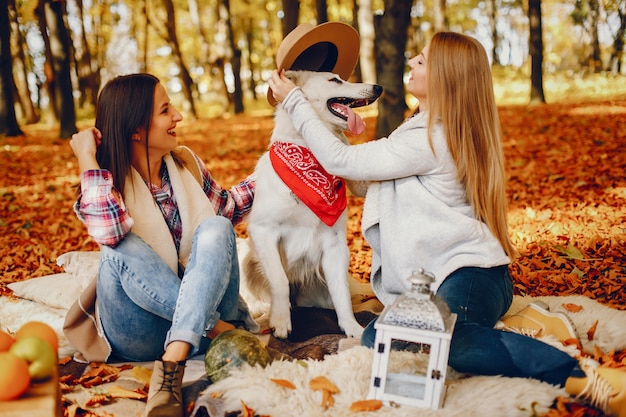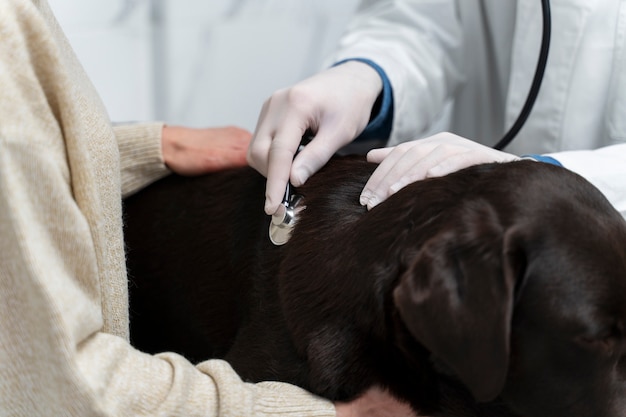Autumn Pet Wellness: When Imaging Is Needed in Downers Grove

Autumn Pet Wellness: When Imaging Is Needed in Downers Grove
As the crisp, rainy weather settles into Downers Grove each October, pet owners often notice new or worsening symptoms in their dogs and cats. Maybe your senior dog seems stiffer on his morning walk, or your cat is suddenly coughing after a chilly night. Autumn’s temperature swings, dampness, and shorter days can trigger a range of seasonal health concerns in pets, from joint discomfort to respiratory flare-ups. While some symptoms are mild and resolve with supportive care, others may signal underlying conditions that require advanced diagnostic imaging. At 4 Paws Imaging, we specialize in pet imaging in Downers Grove, providing local families and referring veterinarians with detailed answers when pets need them most.
In this article, our experienced veterinary professionals will help you recognize common autumn pet health symptoms, explain why certain conditions emerge during this season, and clarify when imaging such as X-rays, ultrasounds, or CT scans becomes essential for your pet’s wellness. You’ll learn how our advanced imaging services, including abdominal ultrasounds and echocardiograms, can support early diagnosis and guide effective treatment. We’ll also share proactive steps to keep your pet comfortable during the fall and outline when it’s time to consult a “specialist vet near me” for a thorough evaluation.
If you’re seeking trusted pet diagnostics near me, our team at 2581 Ogden Avenue, Downers Grove, IL 60515 is here to provide compassionate, specialized care for pets throughout Downers Grove and surrounding communities.
Recognizing Autumn Pet Health Symptoms: When to Pay Attention
When the weather shifts, many pet owners become attuned to subtle changes in their pets’ behavior or comfort. Some of the most common autumn pet health symptoms include increased stiffness or limping, new or persistent coughing, sneezing, nasal discharge, lethargy, and changes in appetite. Senior pets, pets with a history of joint issues, and breeds prone to respiratory conditions are especially vulnerable as the cold sets in.
Key symptoms to watch for are reluctance to exercise, difficulty rising from rest, audible breathing sounds, episodes of rapid or labored breathing, and unexplained weight loss. You might also notice abdominal discomfort, vomiting, or changes in urination, which can be more pronounced in cooler months as pets adjust their routines. For intact females or animals with a history of reproductive changes, autumn can sometimes reveal pregnancy or uterine concerns that benefit from early imaging.
Recognizing these signs is crucial, as what might seem like minor seasonal “aches and pains” could be the first indication of arthritis, heart disease, respiratory infections, or abdominal organ changes. In many cases, advanced diagnostics such as abdominal ultrasounds or echocardiograms offer a non-invasive way to quickly clarify the cause.
Why Autumn Triggers Health Concerns: Underlying Causes Explained
The arrival of autumn in Illinois brings sharp drops in temperature, increased rainfall, and higher humidity—all factors that can influence pet health. Joint pain often worsens as cold, damp weather affects cartilage and soft tissues, particularly in older dogs or pets with a history of orthopedic problems. Conditions such as osteoarthritis or hip dysplasia may become more apparent when pets are less active and exposed to chilly air.
Respiratory symptoms, including coughing, sneezing, or nasal discharge, can be triggered by mold spores, leaf debris, and increased time spent indoors. Pets with pre-existing cardiac or respiratory disease may struggle with these environmental changes. For example, heart murmurs or arrhythmias may present more noticeably, and an advanced echocardiogram can help determine the extent of heart changes.
Additionally, autumn can reveal changes in metabolic conditions. Hypothyroidism or thyroid nodules may become more symptomatic as days shorten and pets’ activity levels shift. A thyroid ultrasound is a valuable tool for evaluating thyroid structure and function, especially in middle-aged or senior pets showing signs of lethargy, weight gain, or haircoat changes.
Finally, reproductive and abdominal concerns may be noticed by attentive owners during autumn’s slower pace. For example, a sudden abdominal swelling or a change in urination might be attributed to cooler weather but could point to underlying organ changes, pregnancy, or urinary tract issues best evaluated with imaging.
Advanced Imaging for Autumn Pet Health: How 4 Paws Imaging Can Help
When your pet develops symptoms that suggest more than a simple seasonal adjustment, advanced diagnostic imaging becomes a vital next step. At 4 Paws Imaging, our state-of-the-art equipment and board-certified team provide precise answers, helping pet owners and referring veterinarians make confident decisions.
Our approach to pet imaging in Downers Grove includes a range of modalities. X-rays are often the initial tool for evaluating joint pain, fractures, or signs of arthritis. If your dog is limping or your cat suddenly seems stiff, radiographs can reveal changes within bones and joints. For more detailed assessment of soft tissues, our ultrasound services—including abdominal ultrasounds and pregnancy ultrasounds—allow us to visualize internal organs in real-time. This is particularly helpful for pets with vomiting, changes in urination, or suspected pregnancy.
When cardiac signs are present, such as coughing, lethargy, or breathing difficulties, our echocardiogram and electrocardiogram (ECG) services provide comprehensive heart evaluation. This enables our veterinary professionals to detect structural abnormalities, arrhythmias, or early signs of heart failure. For pets requiring ongoing monitoring, our Holter monitors offer extended heart rhythm tracking in the comfort of your home.
Our imaging specialists work in close partnership with primary care veterinarians throughout Downers Grove and surrounding communities, ensuring seamless communication and coordinated care. As a “specialist veterinarian near me,” we serve as a trusted referral destination for advanced diagnostics, and we prioritize both accuracy and comfort for every pet.
Supporting Your Pet at Home: Autumn Wellness Tips
While not all seasonal symptoms require advanced imaging, proactive home care can make a significant difference for your pet’s comfort during autumn. Steps to support joint health include providing soft bedding, keeping pets warm and dry indoors, and encouraging gentle exercise. For respiratory health, minimize exposure to damp leaf debris and use air purifiers if mold spores are prevalent. Monitor your pet’s breathing and seek prompt evaluation if you notice persistent coughing or increased effort.
If your pet is on medications for chronic conditions like arthritis or heart disease, discuss any changes in symptoms with your primary veterinarian, as autumn weather may necessitate adjustments. For intact females or pets with abdominal changes, keep a close watch for signs such as swelling, decreased appetite, or changes in behavior. Early detection, paired with advanced diagnostics such as those offered at 4 Paws Imaging, can often lead to better outcomes.
Remember that preventive screening—such as a thyroid ultrasound or routine abdominal ultrasound—may be recommended for pets with risk factors or previous health issues, especially as they age. Our team is always available to discuss which imaging options best suit your pet’s needs.
When to Seek Professional Imaging: Knowing the Right Time
It can be challenging to decide when a pet’s symptoms warrant more than home care or a routine checkup. Warning signs that indicate the need for specialty pet imaging near me include persistent limping, severe lethargy, unexplained weight loss, labored breathing, fainting episodes, or abdominal swelling. If your pet’s symptoms do not improve after a few days, worsen suddenly, or are accompanied by concerning behaviors such as collapse or difficulty eating, prompt evaluation is essential.
Veterinary imaging in Downers Grove is especially important for pets with chronic illnesses, those recovering from recent illness or surgery, and animals whose baseline has changed noticeably with the season. If your primary veterinarian recommends advanced imaging, or if you are concerned about symptoms that seem unusual for autumn, our imaging team is ready to provide answers and peace of mind.
For those searching for “specialist vet near me” or “pet diagnostics near me,” 4 Paws Imaging is equipped to deliver precise, compassionate care in collaboration with your family veterinarian. Our referral-based model ensures that your pet receives the expertise and technology needed for an accurate diagnosis.
Take Action for Autumn Pet Wellness: Contact 4 Paws Imaging
As autumn unfolds in Downers Grove, your pet deserves every advantage for a comfortable, healthy season. By staying alert to subtle symptoms and understanding when advanced imaging is needed, you can play a proactive role in their wellbeing. If you notice persistent joint pain, respiratory issues, or unexplained changes in your pet, our veterinary professionals at 4 Paws Imaging are here to help.
We invite you to reach out to our imaging specialists for more information about all of our veterinary imaging services, or to discuss a referral from your primary veterinarian. Our facility at 2581 Ogden Avenue, Downers Grove, IL 60515 is dedicated to serving Downers Grove and surrounding communities with state-of-the-art equipment and a commitment to gentle, thorough diagnostics.
If you are searching for a “specialist veterinarian near me” or need pet imaging in Downers Grove, trust our experienced veterinary team to guide you through the process with clarity and compassion. To learn more or to schedule a consultation, call (630) 746-1382 or visit our website at 4pawsimaging.net. Your pet’s health and comfort are our top priorities this autumn and every season.
Disclaimer: This article is for informational purposes only and does not replace professional veterinary care. If your pet is experiencing severe or rapidly worsening symptoms, consult your primary veterinarian or a local emergency clinic immediately.
References
For more information about pet imaging and seasonal pet health, you may wish to consult resources such as the American College of Veterinary Radiology and the American Veterinary Medical Association.

















